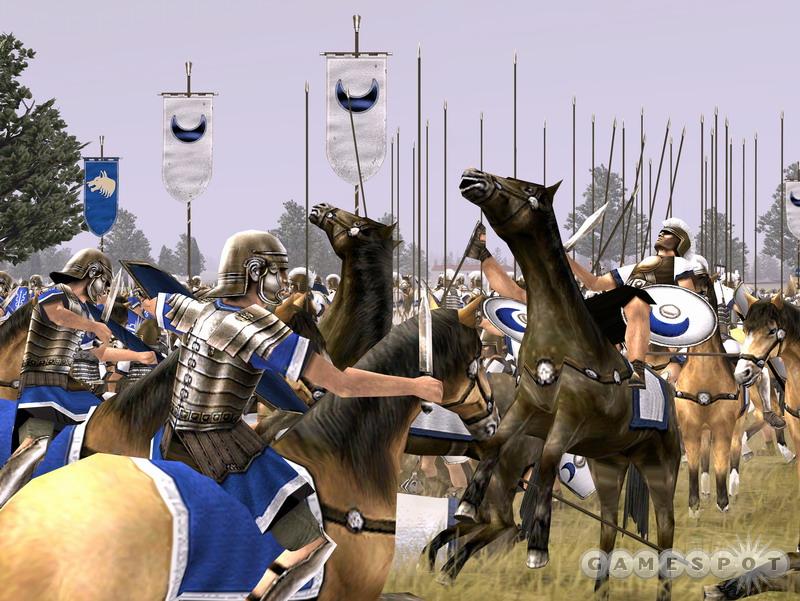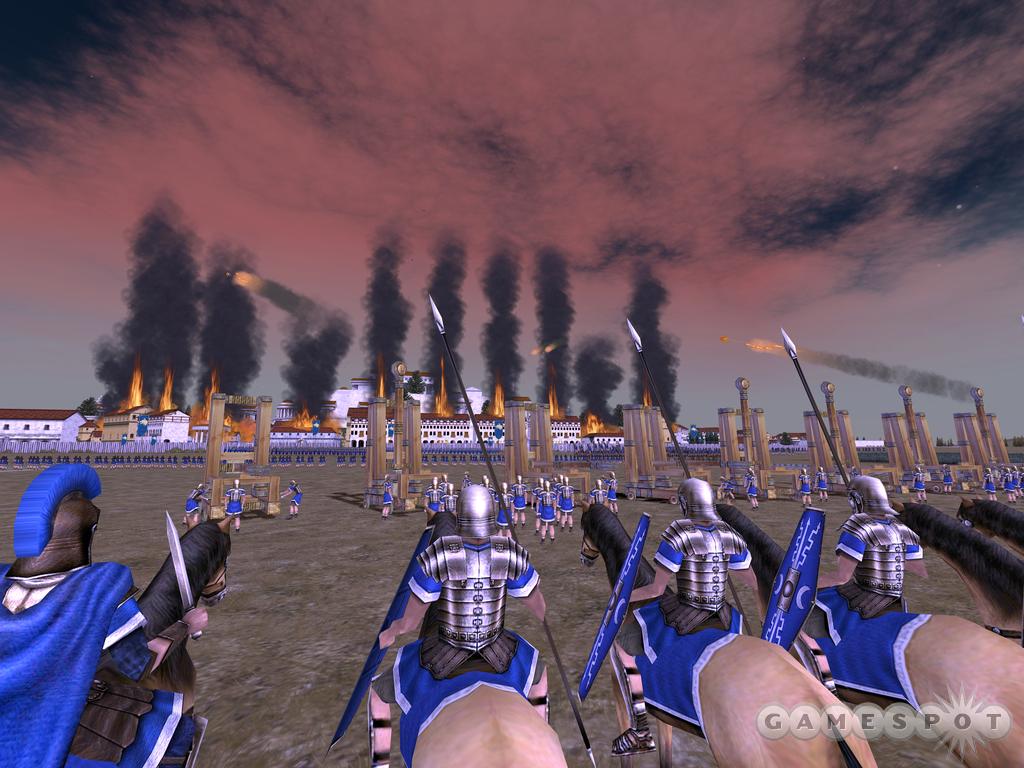Rome: Total War Designer Diary #2
Lead programmer Jerome Grasdyke discusses the powerful nations you'll represent in Creative Assembly's epic strategy game.
Real-time strategy games used to all be the same--you collected resources, built a base, built an army, and squashed your opponent as fast as you possibly could. But in recent years, we've seen real innovation, thanks to games like Creative Assembly's Total War series, which lets you conduct political intrigue in a turn-based mode and fight titanic battles with thousands of soldiers in real-time mode. The next game in the series will take place in ancient Rome and will feature gigantic 3D battlefields and massive armies of centurions, chariot riders, and elephant troops. In this edition of our Rome: Total War Designer Diaries, lead programmer Jerome Grasdyke discusses the different nations you'll be able to represent in the game.

Carving Out an Empire
By Jerome Grasdyke
Lead Programmer, Creative Assembly
Howdy folks, and welcome back to the second installment of Rome: Total War, in six easy steps. A month has passed, and we are now that much closer to release. The time seems to be whipping past at fantastic speed. This month I'm going to talk a little about the various factions in the game, their different capabilities, and how they relate to history.
The time period we're interested in stretches from roughly 265 BC to AD 15. To place it in context, this is not long after Alexander the Great came out of Greece with a modest army and proceeded to crush everybody who dared to stand against him. The empire he created in the process stretched from Greece all the way to the borders of India--about one and a half times the width of the US--where he died a tragic death. Unfortunately, he left no heir. So, upon his death, this great empire fractured into several smaller kingdoms run by Alexander's old generals. Together, these small kingdoms were called the "successor states," of which none had any dominant power. Much of the rest of Europe at that time was filled with barbarian tribes with only loose ties to each other. It was a time of great unrest, and the stage was set for Rome to come into its own.
Rome: Total War's main campaign starts some time after Alexander's conquests, re-creating the situation at the beginning of the First Punic War. At this time, the Romans have a foothold on the rich island of Sicily, but so do the Carthaginians and the Greeks. It's a dangerous flash point that has already seen some conflict. Both of the other occupants of Sicily are among Rome's immediate rivals, and the Carthaginians in particular are a thorn in Rome's side because of their powerful navy. To the north of Rome there are fierce Gauls, and to the east, Dacian barbarians and the likes of Macedon and Scythia. Further away there are the Germanic tribes, the Egyptians, the Parthians, and the Seleucids, to name but a few of the many factions.
In gameplay terms, these various factions can be split into a number of groups that have different strengths and weaknesses. The barbarian factions tend to have cruder technology, which makes for a shallower "tech tree" (a path of technological advancement), for example. This means that although they get their most powerful troops earlier in the game than the civilized factions, they cannot develop some advanced city features such as building huge walls, which make siege battles particularly tough later on.
There is also a more trade-oriented focus for the eastern nations, and most have powerful cavalry as their key weapon. Both the Carthaginians and the Romans have many advanced temples and access to a broad range of troops. The civilized nations as a rule have fewer, better-trained troops, while the barbarians tend toward unsophisticated hordes of head-bashers with a few elite units of chosen axemen or berserkers.
Et Tu?
The Romans in particular face many very different enemies. For this and other reasons, Rome is split into three main factions, which are tentatively named the Julii, Brutii, and Scipii after powerful families of the time. There is a fourth Roman faction as well, the Senate, which rules over Rome itself. These four Roman factions start as an alliance: the Scipii in the south, facing off against the Carthaginians on Sicily; the Brutii poised to strike eastward into Greece; and the Julii on the frontline in the north of Italy. They each offer a distinctly different playing experience. The Julii face many barbarian enemies and are often outnumbered by powerful Gaulish warbands. The Scipii must deal with Carthaginian Elephants and the hit-and-run tactics of Numidian cavalry. And the Brutii will face the heavy cataphracts and hoplite phalanxes of the successor states.

The Senate as a faction has a special role in the game. Besides managing the city of Rome it provides a guiding hand to the player, giving missions to the various Roman factions and granting rewards for their successful completion. These missions then affect the standing of the faction in Rome (the Senate and people greatly favor those who further the glory of Rome). Another feature that the game takes from history is the idea of the Senate assigning "public offices," such as the post of aedile (a Roman magistrate) or the consulships. These carry various benefits in the game, such as bonuses for the characters holding the office or a construction bonus in the city where that character is governor.
The Roman army has also been singled out for some special attention. One difficult decision we had to make was whether to include the Marian reforms. The early Romans had an army that was almost Greek in makeup, with lightly armed skirmishing velites supporting groups of hastati spearmen, and heavily armed triarii veterans further back. This system worked well for them for many years, but around 108 BC a general named Gaius Marius found himself pressed for troops, and he abandoned the traditional structure. He made large-scale reforms to the army, creating the legions for which Rome would eventually become famous. This event was so key to the later dominance of Rome's armies across Europe that we felt we couldn't do without it.
Of course, armies are not the only option, just as the Romans are not the only faction you can play. Diplomacy between the factions is an important area of the game where you can arrange alliances, arrange attacks against mutual enemies, or invite other nations to become a protectorate. This is just one area where money can be leveraged into power. But the exact workings of these things are a matter for another time, and another designer diary.
Got a news tip or want to contact us directly? Email news@gamespot.com
Join the conversation